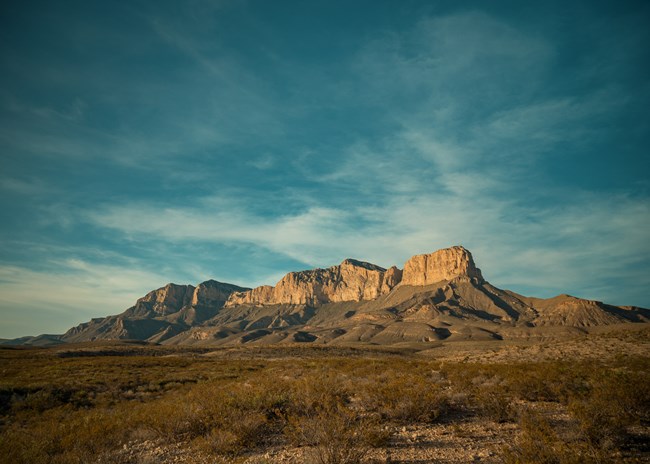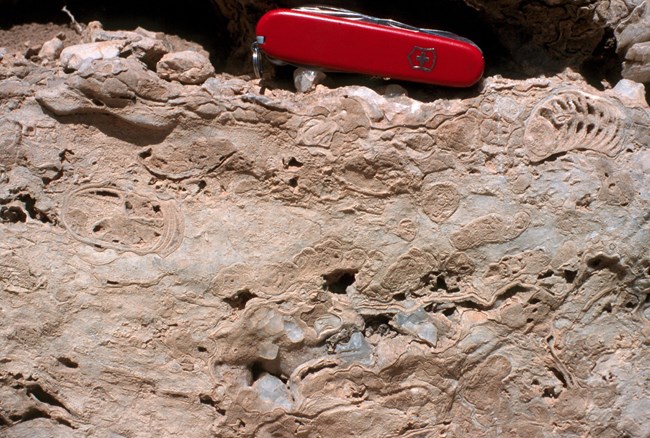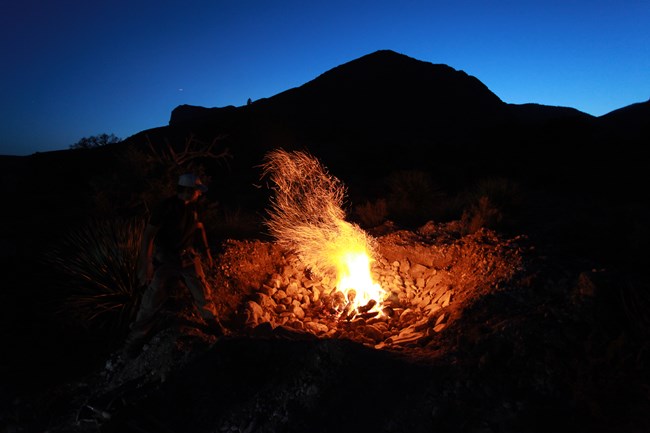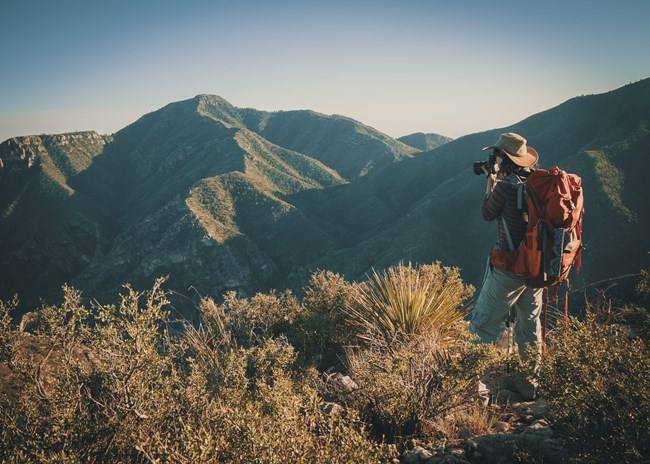
NPS/Giraffeascope Today, Guadalupe Mountains National Park includes 86,416 acres in west Texas, just south of the New Mexico state line and north of U.S. Highway 62/180. The Guadalupe Mountains rise more than 3,000 feet above the arid Chihuahuan Desert that surrounds them. El Capitan, the park’s most striking feature, is a 1,000-foot-high limestone cliff. Nearby Guadalupe Peak, 8,751 feet above sea level, is the highest point in Texas. 
NPS Photo 
NPS Photo The settlement of ranches around the Guadalupe Mountains began in the late-1800s and led to periodic conflicts with the Mescalero Apache Tribe. During the U.S. Army’s military campaign against the Mescalero Apache Tribe, the high country of the Guadalupe Mountains was one of their last sanctuaries. By 1880, the majority of the Mescalero Apache Tribe no longer occupied the Guadalupe Mountains region. Subsequent years brought more ranchers to the area. In the 1920s and 1930s, J. C. Hunter purchased many of the properties and consolidated them into one large holding. Hunter built structures and an extensive livestock watering system that pumped spring water from the southeast lowlands to the high country. Wallace Pratt, a petroleum geologist, charmed by the Guadalupe Mountains, bought land in McKittrick Canyon in the 1920s and built two residences that remain in the park. In 1959, Pratt donated his land to the National Park Service. Adjacent lands then owned by J. C. Hunter, Jr. and others were eventually purchased and combined into the new Guadalupe Mountains National Park. 
NPS/Giraffeascope In 1978, 46,850 acres of the park’s backcountry were formally designated by Congress as wilderness. This action was authorized by Public Law 95-625, the National Parks and Recreation Act of 1978. On October 28, 1988, Congress passed legislation (Public Law 100-541, 102 Stat. 2720) that enlarged the park by 10,123 acres. These lands include gypsum and quartzose dunes in an area west of and adjacent to the original park boundary. |
Last updated: January 21, 2023
